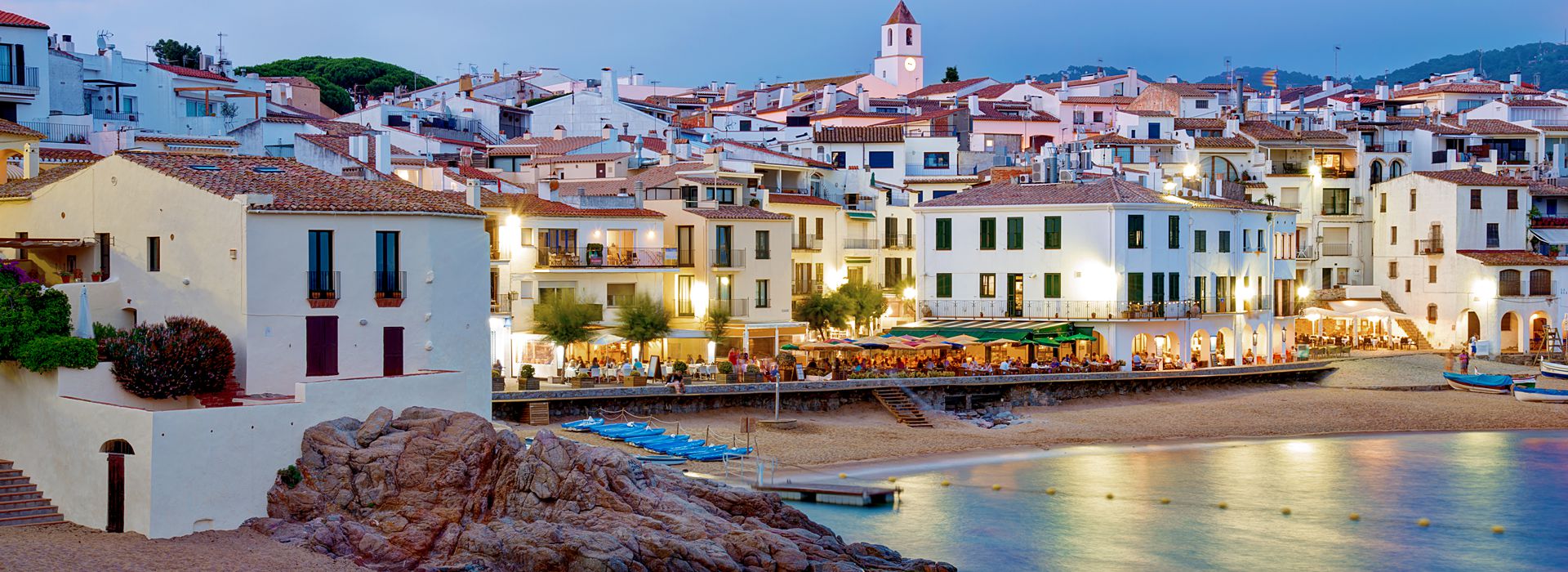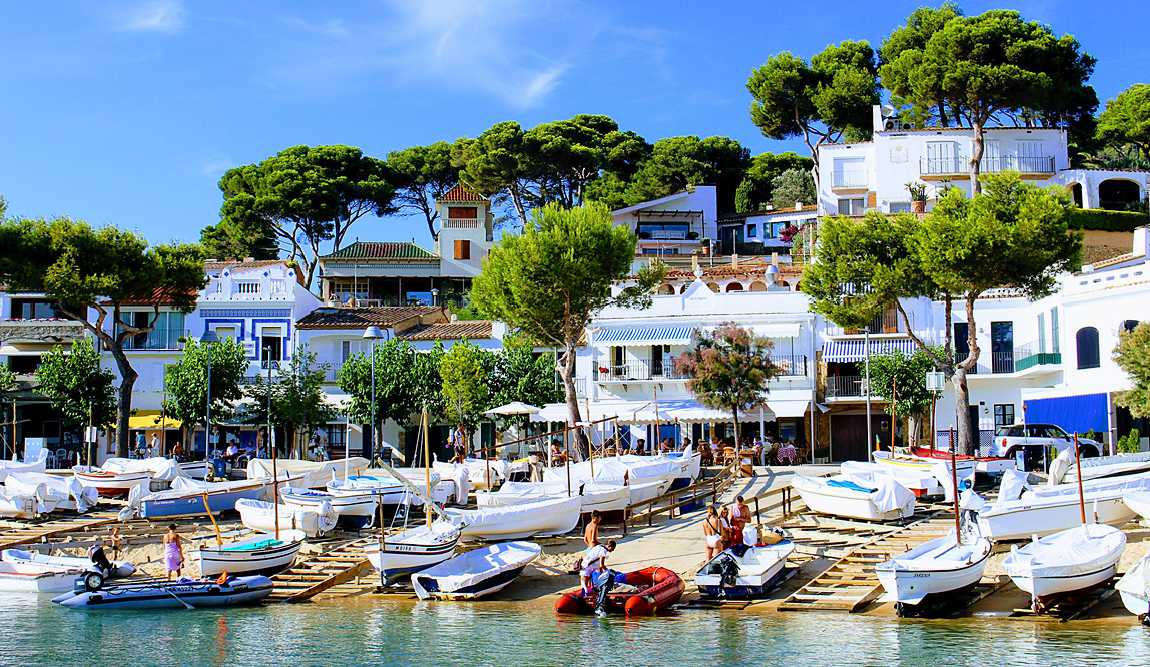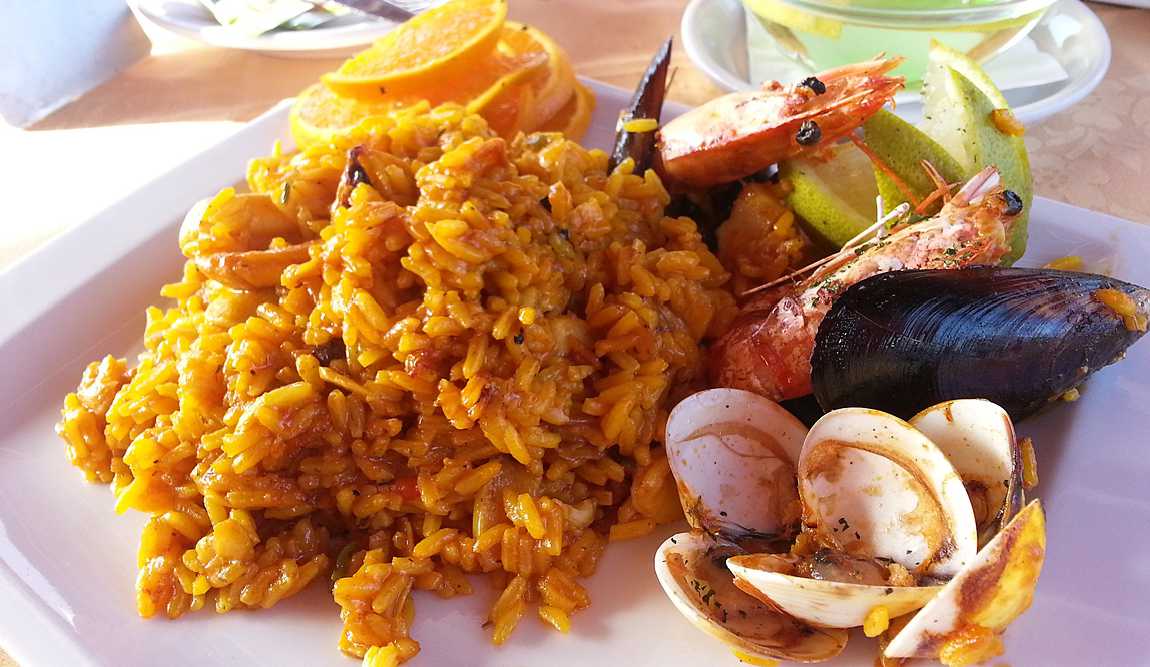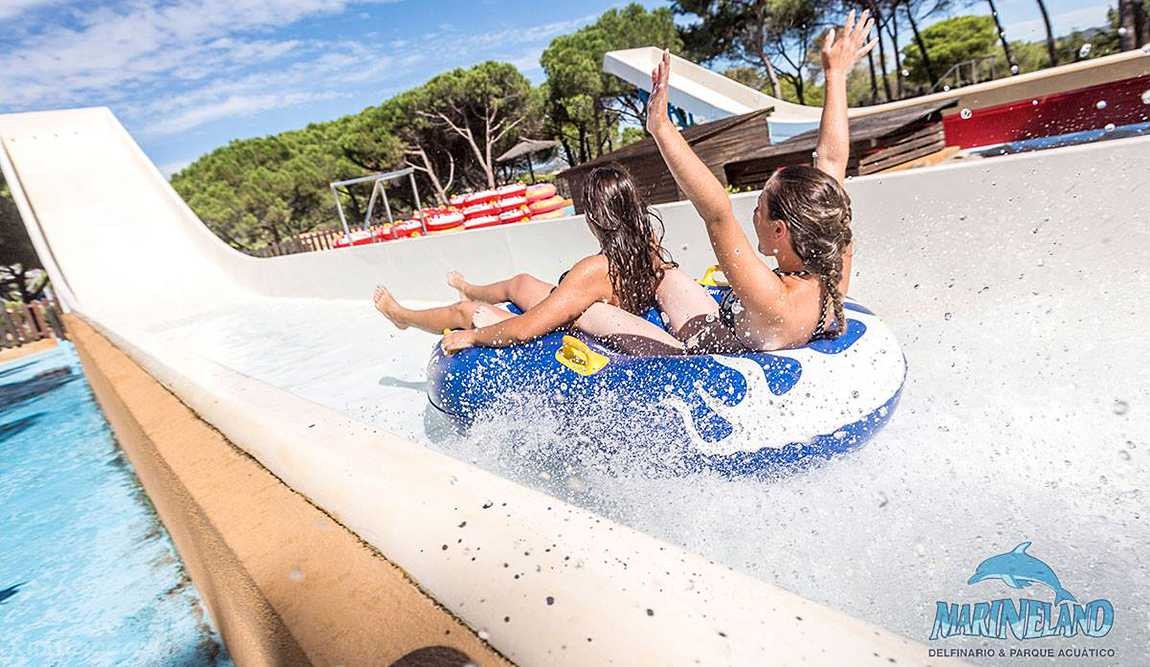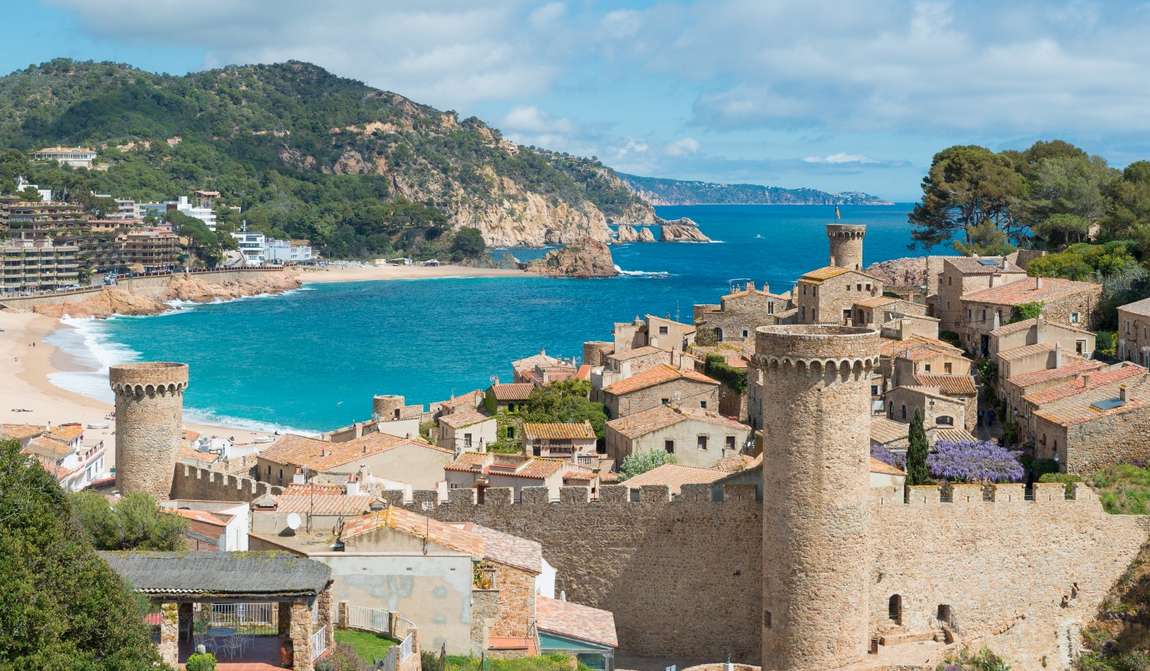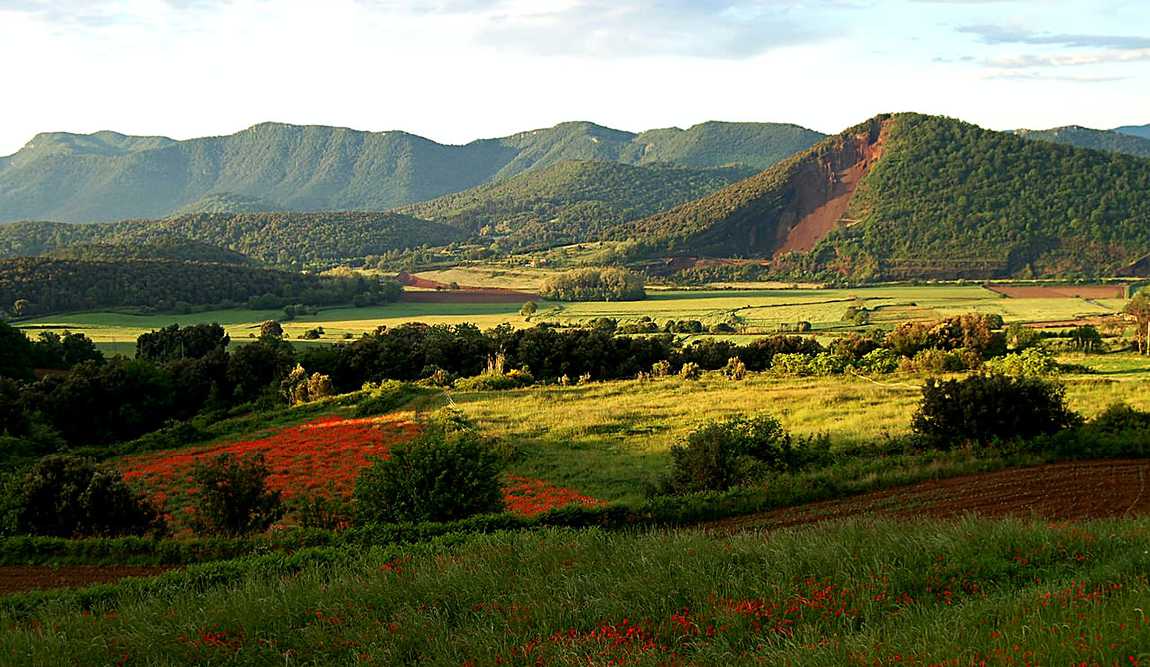The coastline of Spain, where the pine-covered Pyrenees descend directly to the Mediterranean Sea, is called the Costa Brava, a rocky, wild coastline. Whether because the coast of the province of Girona is so-called, the mountains seem impregnable, or because these areas were unknown to tourists until the mid-twentieth century.
But today, the Costa Brava is synonymous with summer family holidays at relatively low cost. In addition, many resorts in the region specialise in family tourism and have a special certificate issued by the Catalan Tourism Agency. It means that holidays with children in the Costa Brava will be a success.
Costa Brava on the map of Spain
The Costa Brava is located in eastern Spain, in the Autonomous Community of Catalonia, in the province of Girona. It stretches from Portbou in the north, near the border with France, to the town of Blanes in the south. The provincial capital of Girona is 58 kilometres from the main resorts: Blanes, Lloret de Mar 56 km, Tossa de Mar 52 km, L'Estartit 24 km, Roses 61 km, Portbou 78 km.

Photo:https://www.mapsworldwide.com/
The aptly named Costa Brava first appeared in the early twentieth century, the title of an article about the Catalan coast. But it wasn't until the 1970s that tourists learned of the location of the Costa Brava. And very soon, the specialisation of its resorts began to emerge.
Lloret de Mar, Blanes, Roses, Sant Antoni de Calonge, and Sant Feliu de Guixols have a family tourism destination certificate (DTF) issued by the Catalan Tourism Agency. The towns have free children's clubs on the beaches, animation and children's activities programmes, playgrounds and parks.
What else is there to mention about the geographical advantages of the Costa Brava? The proximity to Barcelona, of course. An hour's drive and you're walking the La Rambla, marvelling at the imagination of Antoni Gaudi and climbing Mount Tibidabo to see all of Barcelona at once instead of lying on the beach.
Costa Brava for Kids

The Costa Brava could be called a region of contrasts if it weren't for the distinction between good and... good. The mountains are impregnable, the beaches are ennobled, ancient Roman ruins and modern hotels, wildlife and plenty of fun activities, colourful local restaurants and all-inclusive hotels. So you can tailor your Costa Brava holiday to suit your lifestyle and needs. Why do we recommend holidays in the Costa Brava with children? There are several reasons.
The first reason is the lack of heat. No other resort region in Spain boasts such mild mid-summer weather. Here you can holiday with a baby during peak season and not have to deal with the strains of acclimatisation.
But as early as September, the Costa Brava is chilly for a beach holiday, at the same time September weather is ideal for excursions.
The second is convenient transfers. The journey from the airport to any resort takes no more than an hour, even on public transport. The third is the abundance of options to keep your child occupied. The Costa Brava has a network of activities for children, from beach playgrounds to amusement parks. As for museums, they are more like entertainment centres.
Close to Barcelona's Costa Brava: once you've had enough of the beaches and mountains, head to the vibrant, bustling city with plenty of activities for the whole family.
The fourth and foremost reason is that hotels are geared towards travellers with children. Maximum facilities for younger guests, from cots to babysitting services, make it possible to enjoy a whole holiday with your child.
Best time to travel

The beach season in the Costa Brava is frustratingly short, from early June to mid-September. The period when you can swim in the sea is even shorter — the water is only warm in July and August. But luckily, holidays on the wild coast are not limited to beach pastimes.
Firstly, the opening of the season in the Costa Brava can be celebrated not by dipping into the sea but by going on an excursion. May is an excellent time to visit small towns, and breathing in Barcelona in the spring is much easier. Secondly, the holidays can affect your choice of when to visit the Costa Brava.
In Catalonia, it's customary to celebrate the patron saint of the city. There are theatrical parades, children's attractions and fireworks in the cities for a few days. The town of Blanes celebrates on 24-28 June, Tossa de Mar between 28 June and 1 July and Lloret de Mar on 24-30 July. In addition, at the end of July, fireworks displays are held in Blanes, and for a week, the evening sky is lit up with fireworks.
Weather and Climate
The Costa Brava is Spain's coolest coastline. The average temperature during the summer months is only +25°C, and by mid-September, the beach season is over. However, this state of affairs has at least one undeniable advantage.
The dry, mild climate of the Costa Brava is most suitable for those who cannot tolerate the heat, such as young children.
Summer on the coast starts according to the calendar, i.e. in June. Temperatures reach +22-25°C as early as the first days of the month and then rise to +30°C. The temperature does not rise above this level in July and August. Moreover, even in the hottest months, the thermometer dips to +18-20 ° C in the evenings, so jumpers and light jackets in the luggage do not hurt.
Unlike Costa Blanca or Costa Dorada, where it's mosa cold snap to +20 ° Ct enjoyable to holiday in September, the best holidays in Costa Brava with children are in July and August. Only in these months does the sea become warm enough for bathing. September weather is generous with surprises. In the first half of the month, as a rule, it's still warm, +25-28 ° C. Autumn holidays in the Costa Brava are best planned at the start of September to ensure good weather.
The autumn rains begin in October. The air is filled with a delicate scent of pine needles and citrus fruits as a reminder of the coming winter and New Year's holidays. The air temperature during the day stays at around +18-22° C, and it's time to plan a non-beachy holiday with your child.
From November to March, the Costa Brava is quiet and chilly. The thermometer readings drop to between +13 and 15°c. The spring sun warms to +18°C only in April and +20°C in May. If you enjoy long walks by the sea and are not keen on bathing, May is a good time to take your baby to the Costa Brava.
Sea Temperature

No matter how hot the Spanish resorts get, the sea temperature is by no means consistently as high as the air temperature. In the Costa Brava, the situation is precisely the same. Even in the second half of summer, the water temperature in the Costa Brava does not exceed +22-23°C. If the heat is unprecedented for these places, the sea can warm up to +24°C. But in July and August, the sea temperature is only +21°C.
The Costa Brava should be visited in early July at the earliest to swim. In June, the sea only gets as warm as +20°C.
However, in the first half of September, the sea retains the warmth accumulated during the summer. The temperature stays around +23°C until mid-month, then gradually decreases. In October, the sea cools down to +18-19°C.
Food

Costa Brava hotels offer a variety of dining concepts, from breakfast-only to all-inclusive. The most common option is a buffet breakfast, which is included in the accommodation price. Such a buffet usually includes porridge, egg dishes and dairy products suitable for children. Family hotels also offer children's and diet menus. Hotel restaurants often have a corner where you can heat baby food. More often, however, tourists eat in restaurants, learning the intricacies of Catalan cuisine and savouring sparkling cava.
A typical Catalan snack for children is Pa Amb Tomaquet, a slice of bread rubbed with tomato and garlic and drizzled with olive oil. The bread can be topped with cheese or a portion of ham.
If you are going to cook on your own, you can buy everything you need in the supermarkets. Lidl supermarkets are in almost all towns along the coast, and Spanish supermarkets Mercadona and Dia in Blanes.
Getting Around
You need public transport in the Costa Brava just as much as you intend to travel. Tourists usually move around on foot in small towns, but when it comes to travelling to Girona or Barcelona, trains and buses can help.
Only Blanes is connected to Barcelona by train. The journey takes 1.5 hours, and the ticket price is €5. You can also take a train from Blanes to Girona and Figueres. Buses run between the other resorts. They run pretty frequently, but it doesn't hurt to check the timetable.
A relatively popular mode of transport in the Costa Brava is ferries and boats that take you from one seaside town to another. The cost of a boat trip depends on the distance. For example, a journey from Blanes to Tossa de Mar will cost €26, and tickets for children from 4 to 12 years old cost €18. The most expensive way to travel around the Wild Coast is by taxi. For example, a trip to the airport will cost at least €100.
But the only way to travel around the Costa Brava is by car. You can rent a car at the airports in Girona and Barcelona, as well as from car rental companies in the resorts. There are both paid and free parking spaces in the cities. Free parking is usually indicated in white.
 [email protected]
[email protected]


